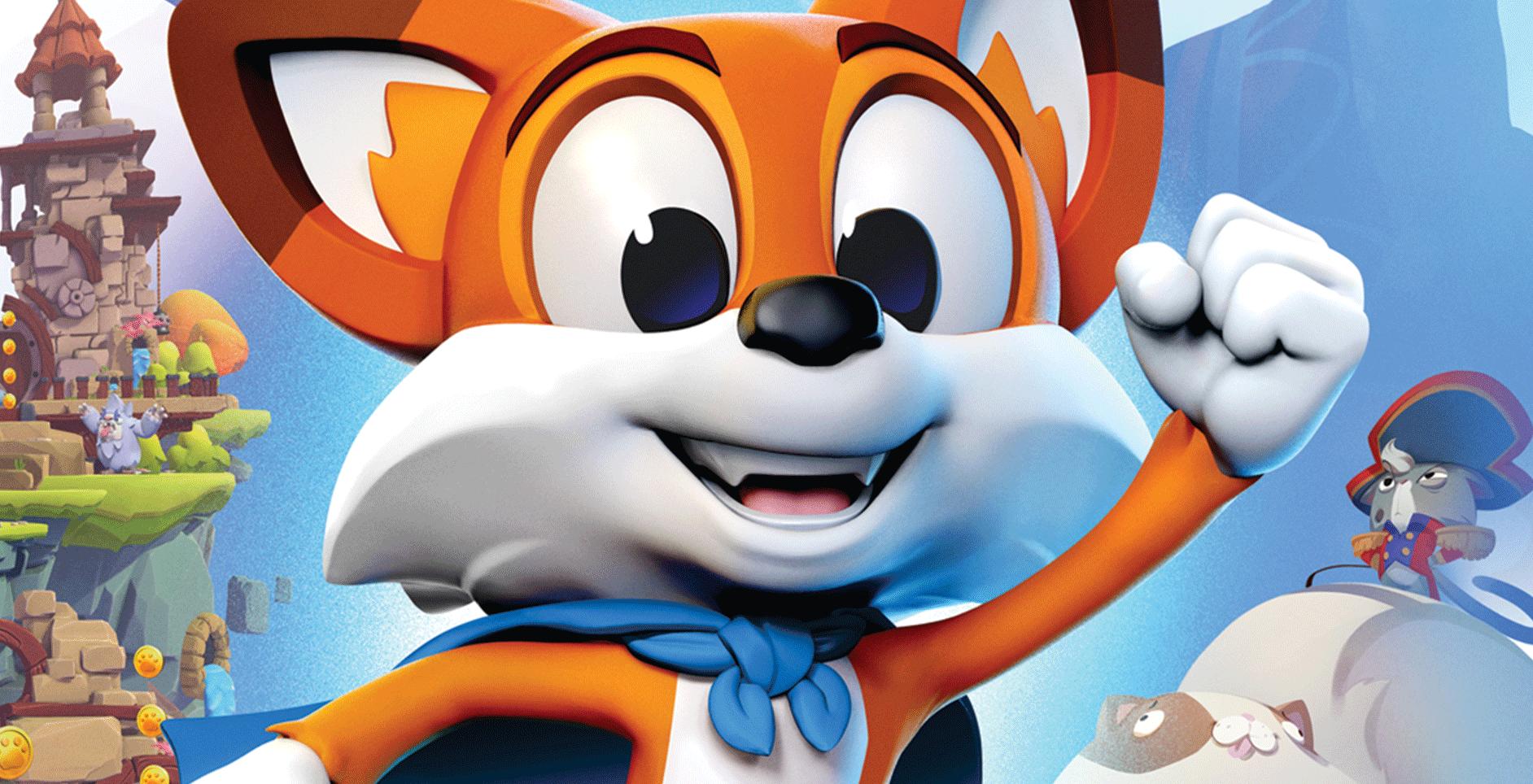Super Lucky’s Tale is a surprise. It’s not going to be a revolutionary game, or the like, but it’s a surprisingly solid little platformer that pays tribute to the games that companies like Rare and Nintendo built their illustrious reputation on. It’s not without its issues though, suffering from a feeling of being woefully generic but it could potentially have your attention from beginning to end. For me, it did.
Super Lucky’s Tale is basically a bit of a love letter to platforming games of yore. In it, you’ll follow Lucky as he travels four distinct worlds collecting clovers – a total of 99 of them – and they’re hidden throughout levels that draw inspiration from platforming games you’ve probably played. If I had to describe it succinctly, I’d call Super Lucky’s Tale something like Banjo-Kazooie Lite. It has the same idea, the same concept behind it; but it feels significantly smaller. That’s not necessarily a bad thing, as it feels more manageable and approachable, but it lacks the epic scale of games like Banjo-Kazooie. What I did appreciate about Super Lucky’s Tale is how there is a variety of ways to earn clovers, they’re not just strewn throughout every level. Each level has four clovers that can be found – some tied to collecting coins, some to collecting the letters L-U-C-K-Y, some are hidden like secret rooms from Donkey Kong and one is always awarded for finishing the level. Outside of the levels themselves, there are puzzles that can get surprisingly hard for game of this ilk, that’ll also award Lucky with a clover or two.
What I did appreciate about Super Lucky’s Tale is how there is a variety of ways to earn clovers, they’re not just strewn throughout every level. Each level has four clovers that can be found – some tied to collecting coins, some to collecting the letters L-U-C-K-Y, some are hidden like secret rooms from Donkey Kong and one is always awarded for finishing the level. Outside of the levels themselves, there are puzzles that can get surprisingly hard for game of this ilk, that’ll also award Lucky with a clover or two.
Variety is the name of the game with Super Lucky’s Tale, and it’s what stops it from being a complete disaster. You’ll spend your time jumping and burrowing through several different types of levels. More free roam levels feel like something from games like Super Mario 3D World – you can explore as far as you want but they’re just floating 3D cross-sections rather than large sprawling worlds. Surprisingly, there’s also some side scrolling levels included too, and while these take very liberally from games like Donkey Kong Country, they’re a fun way to break up the action. What keeps Super Lucky’s Tale fresh from level to level is that each one is built around gimmick of some sort. One level has you carrying a lantern as it illuminates ghostly floating platforms, another has you navigating sinking platforms. They’re simple gimmicks, but not constantly relying on the same ones for every level ensures that the game never quite wears out it’s welcome or feels repetitious.
What keeps Super Lucky’s Tale fresh from level to level is that each one is built around gimmick of some sort. One level has you carrying a lantern as it illuminates ghostly floating platforms, another has you navigating sinking platforms. They’re simple gimmicks, but not constantly relying on the same ones for every level ensures that the game never quite wears out it’s welcome or feels repetitious.
Between these levels are semi-optional levels or situations that aren’t quite big enough to be considered a full level but are substantial enough to be a challenge. These all borrow from some standard conventions – sliding ice block puzzles, tilt the level to move a marble kind of puzzles and endless runner style levels. They’re all standard fare that most players will have no problems solving – especially older ones – but thankfully if this isn’t your thing most can be skipped. That’s because Super Lucky’s Tale takes a page from Banjo-Kazooie in that you don’t necessarily need to do everything to progress. To finish the game, you’ll need to find 80 of the 99 clovers, so some of the more awkward puzzles or challenges you can’t be bothered finishing can be skipped. It’s a nice gesture that you don’t have to be the very best to see everything Super Lucky’s Tale has to offer, if only let down by the fact there’s no explicit reward for 100% completion either.
That’s because Super Lucky’s Tale takes a page from Banjo-Kazooie in that you don’t necessarily need to do everything to progress. To finish the game, you’ll need to find 80 of the 99 clovers, so some of the more awkward puzzles or challenges you can’t be bothered finishing can be skipped. It’s a nice gesture that you don’t have to be the very best to see everything Super Lucky’s Tale has to offer, if only let down by the fact there’s no explicit reward for 100% completion either.
But what I’m most confused about with Super Lucky’s Tale is just who this game is for. On one hand, it’s bright and colourful with some cruisy gameplay that most players will be able to get through. On another, it can be brutally difficult. Difficulty spikes are okay here and there, but I’d imagine many kids might have to get their parents to help them out every so often given how much the difficulty can rise during some of the levels (and even the boss battles). You’ll easily be able to get eight to ten hours out of Super Lucky’s Tale depending on how quickly you explore each level, how quickly you find every clover. There were times where I was legitimately stumped as to where in some of these smaller levels the developers hid them, so once again younger players may need some help from their parents from time to time. Still, even though it sounds short, Super Lucky’s Tale never really feels like an arduous grind and given its lower price point it feels just right.
You’ll easily be able to get eight to ten hours out of Super Lucky’s Tale depending on how quickly you explore each level, how quickly you find every clover. There were times where I was legitimately stumped as to where in some of these smaller levels the developers hid them, so once again younger players may need some help from their parents from time to time. Still, even though it sounds short, Super Lucky’s Tale never really feels like an arduous grind and given its lower price point it feels just right.
In terms of presentation, you’d be forgiven for thinking Super Lucky’s Tale was a Rareware made game. While the art direction is woefully humdrum, the game is colourful enough to captivate the attention of most. The soundtrack sounds like it was excised straight out of Viva Piñata too, which certainly doesn’t help the comparison. From a performance standpoint, playing on a standard Xbox One offers 30fps, while playing on an Xbox One X provides not only a significantly cleared picture but also doubles the framerate, which is a nice perk, though there was noticeable stutter occasionally.



